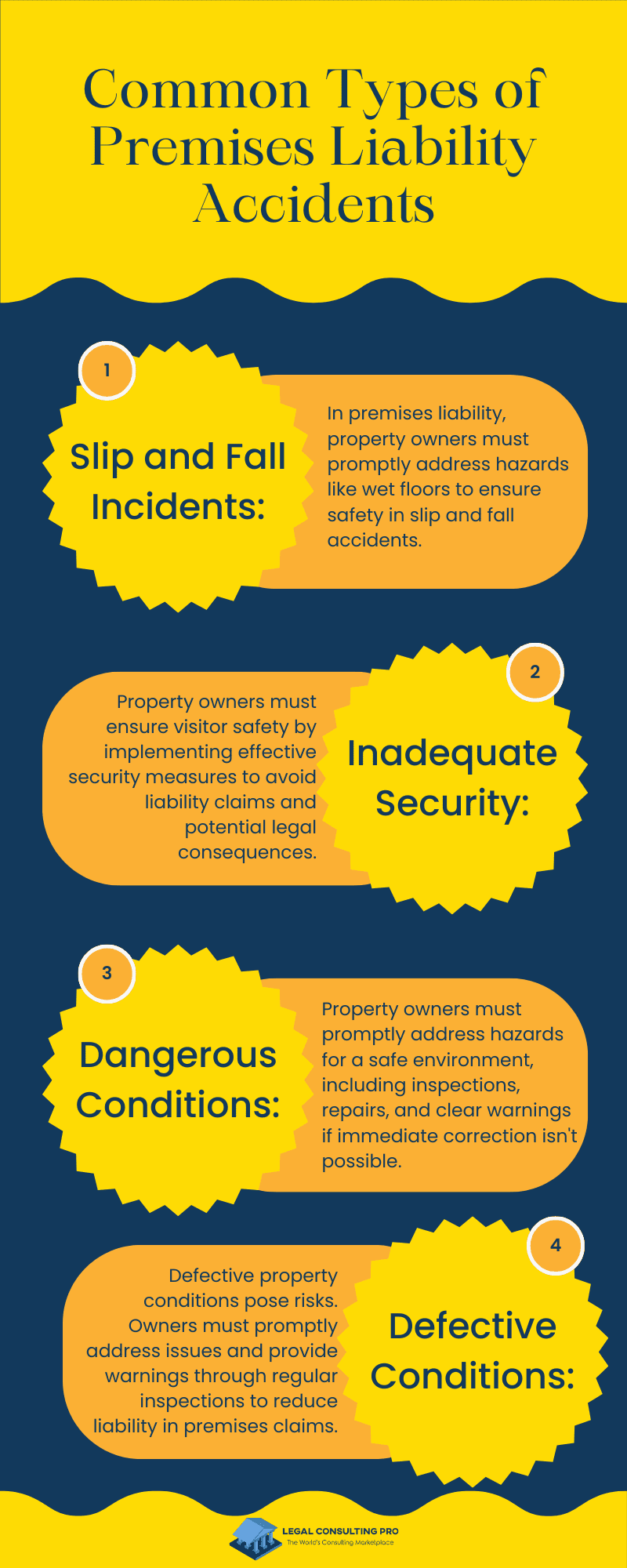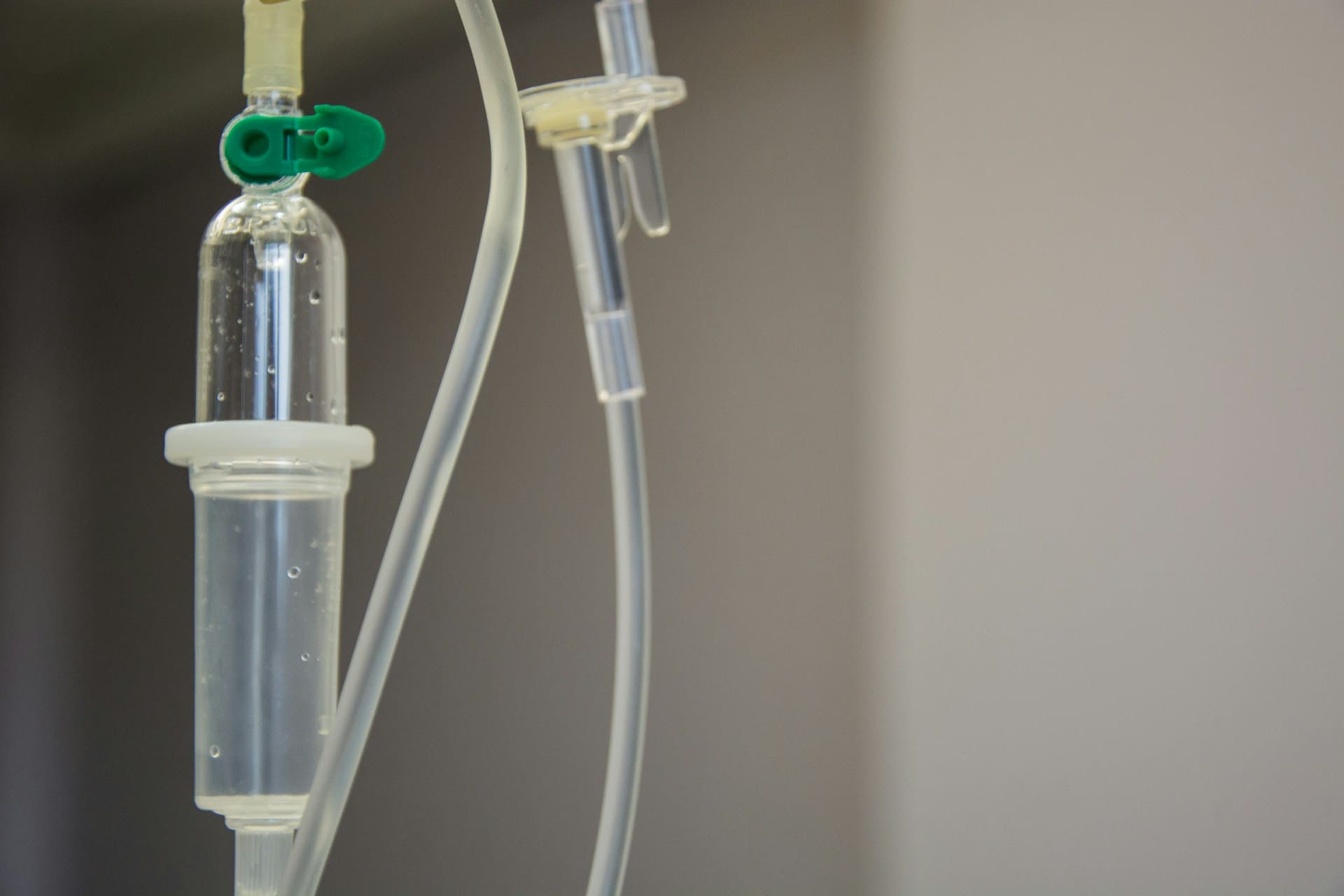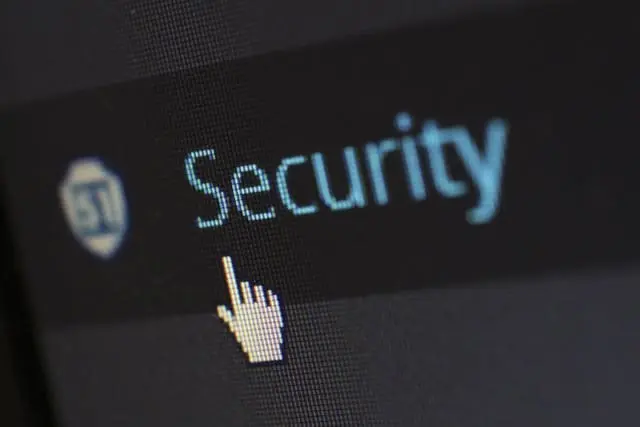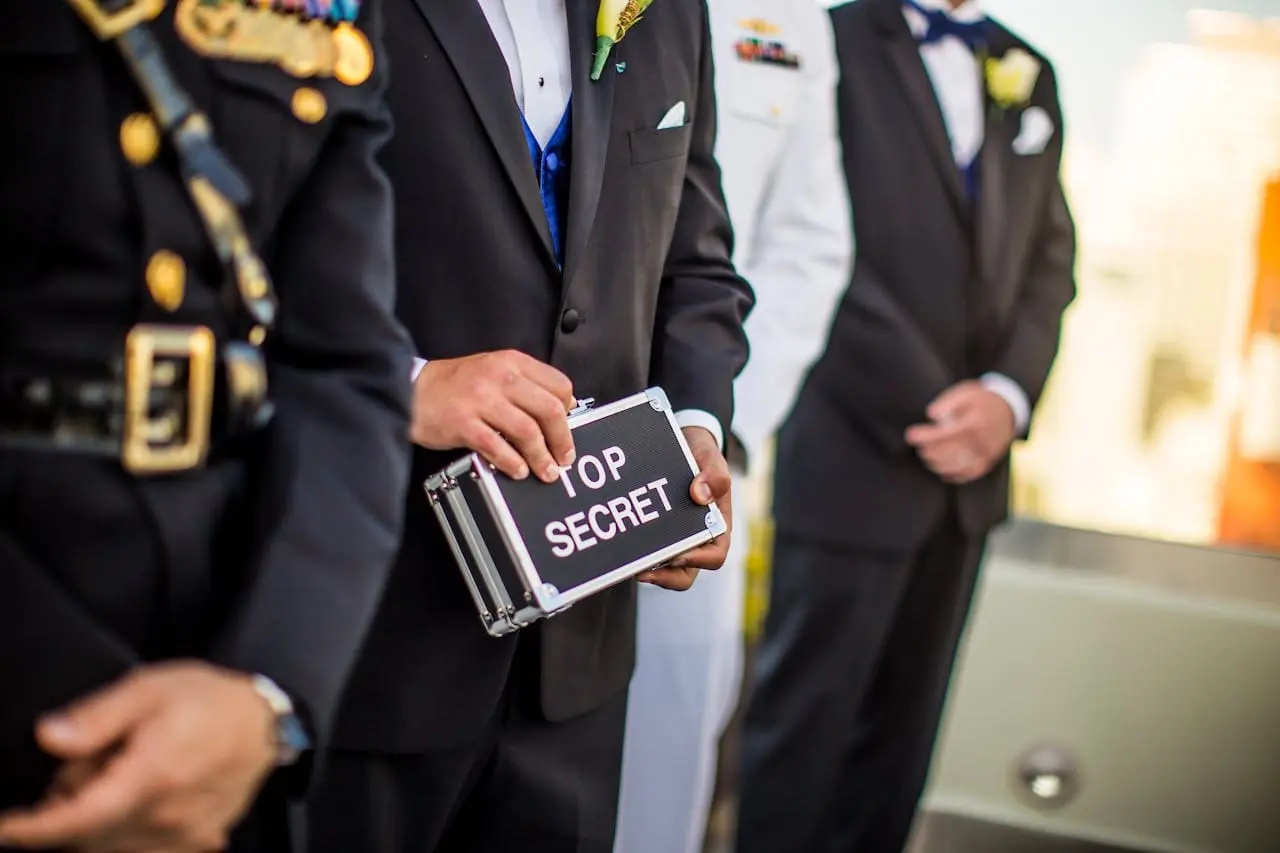Premises liability is a legal consulting concept that holds property owners responsible for accidents and personal injury that occur on their premises. Whether it’s a slip and fall, inadequate security leading to assault, or any other incident causing harm, property owners must maintain a safe environment for visitors. This article explores the key aspects of premises liability, including the legal consulting principles, common types of accidents, and the steps individuals can take if they are injured on someone else’s property.
Understanding Premises Liability
Premises liability is a legal consulting concept rooted in the fundamental principle that property owners bear a responsibility to exercise a duty of care towards individuals who enter their premises. This duty encompasses the obligation to maintain a reasonably safe environment, address potential hazards promptly, and adequately warn visitors of any dangers that may exist on the property.
The legal consulting framework for premises liability establishes different standards of care based on the classification of visitors. These classifications typically include three main groups: invitees, licensees, and trespassers.
- Invitees: This group consists of individuals who enter the property for the direct benefit of the owner. Examples include customers in a store or clients in a business establishment. Property owners owe the highest duty of care to invitees. This duty includes not only maintaining a safe environment but also actively addressing and correcting any hazards that may arise.
- Licensees: Licensees are individuals who enter the property with the owner’s permission but for their benefit, not necessarily for the benefit of the property owner. Examples include social guests or friends invited to a private residence. While the duty of care owed to licensees is slightly lower than that for invitees, property owners are still obligated to provide a reasonably safe environment and address known hazards.
- Trespassers: Trespassers are individuals who enter the property without permission. Despite the lower duty of care owed to trespassers, property owners are still obligated to refrain from intentionally causing harm. This means that property owners cannot set traps or take actions that would intentionally harm individuals who are trespassing on their property.
Understanding these visitor classifications is crucial in determining the level of responsibility a property owner has in specific situations. The legal consulting foundation of premises liability helps establish a framework that balances the rights and responsibilities of property owners with the safety and well-being of individuals entering their premises. It serves as a guide for legal consulting considerations when accidents or personal injury occur on someone else’s property.
Common Types of Premises Liability Accidents
Slip and Fall Incidents:
Slip and fall accidents represent a common category within premises liability cases. These incidents often occur as a result of factors such as wet floors, uneven surfaces, or inadequate lighting on the property. Property owners bear the responsibility of promptly addressing these hazards to maintain a safe environment. This includes taking measures to prevent slips and falls, such as promptly cleaning up spills, ensuring proper signage in wet areas, and addressing any uneven surfaces that could pose a tripping hazard. Additionally, property owners should provide adequate warning to visitors about potential dangers, especially when immediate remedies are not feasible.
Inadequate Security:
Property owners are obligated to take reasonable steps to ensure the safety of their visitors. In cases where inadequate security measures lead to criminal activities such as assaults or robberies on the premises, property owners may face premises liability claims. This includes implementing appropriate security measures, such as surveillance systems, proper lighting, and security personnel, to deter criminal activities and protect visitors. Failure to provide adequate security may result in legal consulting consequences for property owners.
Dangerous Conditions:
Hazardous conditions, such as broken stairs, unrepaired leaks, or faulty wiring, can pose significant threats to visitors on the property. Property owners are legally obliged to promptly address these dangerous conditions to prevent accidents and personal injury. This may involve conducting regular inspections, maintenance, and repairs to ensure that the property is in a safe and well-maintained condition. If immediate correction is not possible, property owners must provide clear warnings to visitors about the potential dangers associated with these conditions.
Defective Conditions:
Defective conditions on the property, ranging from malfunctioning appliances to poorly maintained structures or defective equipment, can lead to personal injury. Property owners must take steps to rectify these defects promptly or provide adequate warnings to prevent accidents. Regular inspections, maintenance schedules, and timely repairs are essential to address and eliminate defective conditions, reducing the risk of personal injury to visitors. Property owners who fail to address or warn about these defects may be held liable for resulting injuries through premises liability claims.

Establishing Liability
Duty of Care:
The foundation of premises liability is the duty of care that property owners owe to individuals who enter their premises. The extent of this duty is often determined by the visitor’s classification—whether they are an invitee, licensee, or trespasser. To establish liability in a premises liability case, the injured party must demonstrate that the property owner owed them a duty of care based on their status at the time of the incident. For example, property owners owe the highest duty of care to invitees, and this duty extends to maintaining a reasonably safe environment and addressing potential hazards.
Breach of Duty:
To succeed in a premises liability claim, the injured party must show that the property owner breached their duty of care. This involves demonstrating that the property owner failed to fulfill their obligation to maintain a safe environment or adequately warn about known hazards. The breach of duty could result from negligence, such as a failure to promptly address a slippery floor or repair a broken staircase. The injured party must establish that the property owner’s actions or inactions deviated from the standard of care expected under the circumstances.
Causation:
Causation is a crucial element in premises liability cases and involves linking the property owner’s breach of duty to the personal injury suffered by the plaintiff. The injured party must establish a direct connection between the hazardous condition on the property, the property owner’s negligence, and the resulting accident. It is not enough to show that a hazard existed; there must be evidence demonstrating that the hazardous condition was the proximate cause of the injuries sustained.
Damages:
Finally, the injured party must prove that they suffered damages as a result of the property owner’s negligence. Damages may include tangible losses such as medical expenses, lost wages, and property damage, as well as intangible losses like pain and suffering or emotional distress. Providing evidence of the economic and non-economic damages incurred is essential to establishing the extent of harm caused by the property owner’s breach of duty. Successful premises liability claims typically involve a comprehensive presentation of the damages suffered by the injured party.
Steps to Take if Injured on Another’s Property
Seek Medical Attention:
The immediate priority following an accident on someone else’s property is to seek prompt medical attention for any personal injury sustained. Timely medical care not only ensures the well-being of the injured party but also establishes a crucial record of the injuries for potential legal consulting proceedings. The medical documentation can serve as evidence linking the personal injury to the incident on the property.
Document the Scene:
If possible, it is important to document the accident scene. Take photographs of the hazardous condition that led to the injury, capturing details such as wet floors, uneven surfaces, or any lack of warning signs. Documenting the scene can provide visual evidence that may be instrumental in establishing the circumstances surrounding the accident.
Obtain Witness Information:
Collect contact information from any witnesses who were present at the scene. Witness testimonies can be invaluable in corroborating the details of the incident and providing additional perspectives on what transpired. Their statements can strengthen the injured party’s case by offering independent accounts of the events leading to the injury.
Report the Incident:
Notify the property owner or manager about the incident as soon as possible. Ensure that the details are documented in writing, including the time, date, and description of the accident. Request a copy of the incident report for your records. Reporting the incident promptly helps create an official record and may facilitate a quicker response from the property owner in addressing the issue.
Preserve Evidence:
Preserve any evidence related to the accident. This may include retaining torn clothing, damaged personal items, or any other items that are relevant to the case. Keeping this evidence intact can aid in establishing the extent of the damages suffered and contribute to building a compelling case.
Consult a Legal Consulting Expert:
Seeking legal consulting counsel is crucial for navigating the complexities of premises liability cases. An experienced attorney specializing in personal injury law can assess the circumstances surrounding the incident, guide the injured party through the legal consulting process, and advocate for fair compensation. The legal consulting expert can help determine liability, negotiate with insurance companies, and, if necessary, file a lawsuit to seek damages for the injuries sustained on the property.
Defenses Against Premises Liability Claims:
- Statute of Limitations: Property owners may raise the defense of the statute of limitations, arguing that the injured party filed the lawsuit after the legally stipulated timeframe. Individuals need to be aware of and adhere to the applicable deadlines for filing premises liability claims.
- Lack of Notice: Property owners may assert that they were unaware of the hazardous condition and, therefore, had no opportunity to address it. Lack of notice can be a valid defense if the property owner can demonstrate that they had no reasonable way of knowing about the danger.
- Independent Contractor Defense: If a third party, such as an independent contractor, is responsible for maintenance or repairs on the property, the property owner may use the independent contractor defense. This argument suggests that the property owner is not liable for the contractor’s negligence.
- Governmental Immunity: In cases where the property is owned by a government entity, governmental immunity may be asserted as a defense. This immunity protects the government from certain legal claims, though exceptions may apply depending on the circumstances.
- Waiver or Release: Property owners might argue that the injured party signed a waiver or release, voluntarily assuming the risks associated with their visit. However, the enforceability of such documents can vary, and certain factors, such as their clarity and fairness, will be considered.
- Superseding Cause: Property owners may claim that a superseding cause, an unforeseeable event or intervening act, was the primary factor leading to the personal injury. This defense seeks to shift responsibility away from the property owner.
- Implied Assumption of Risk: Similar to the assumption of risk, property owners may argue that the injured party implicitly assumed the risk by choosing to enter the premises despite being aware of potential dangers. This defense may be applicable in certain situations, particularly if the risk is inherent or obvious.
- Good Samaritan Defense: In cases where an individual is injured while attempting to assist someone else, property owners might invoke the Good Samaritan defense. This defense suggests that the injured party voluntarily assumed the risk while attempting to aid another person.
Conclusion
Premises liability is a critical aspect of personal injury law, emphasizing the responsibility of property owners to maintain safe conditions for visitors. Whether it’s a slip and fall or an incident involving inadequate security, those injured on another’s property have legal avenues to seek compensation. Understanding the principles of premises liability, common accident types, and the steps to take if injured is crucial for holding property owners accountable and ensuring justice for those who suffer harm on their premises.
Similar blogs:
Understanding the Benefits of Medical Chronology in Personal Injury Litigation
Legal Consulting in Action: Harmonizing Workers’ Compensation and Personal Injury Claims







































